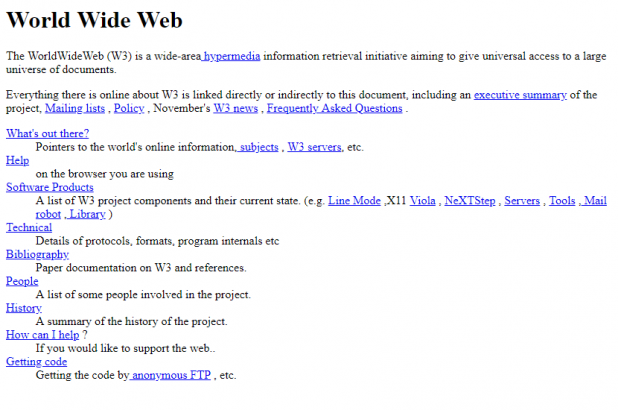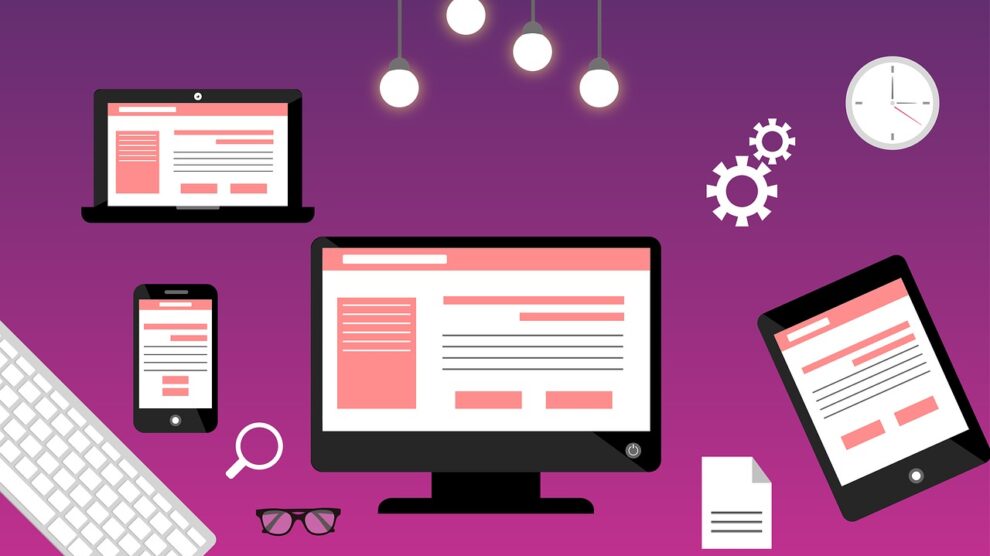It goes without saying – COVID-19 has impacted every industry in one way or another. While some sectors like the hotel and tourism industries have taken some pretty big hits (with many going bust), some, like EdTech, E-Sports, and others, are flourishing.
But how has COVID-19 affected the web design industry?
Or, to put it more directly – how will life change for web designers after COVID-19?
If you’re a web designer and wonder how things will pan out for you, then read on.
What is Web Design (And What Do Web Designers Do)?
Most people think web design is a simple matter of slapping together a theme, a couple of plugins, and a few images to create a website. However, web design goes deeper than that and is a more complicated discipline.
What is Web Design?
Web design is the process of planning and putting together the different elements of a website that gives it a unique look and feel. It also impacts how a website functions on various devices. As a result, a web designer must be well-versed in many different skills and disciplines needed in the production and maintenance of websites.
What Does a Web Designer Do?
Web designers are a unique breed of people that have to wear many hats to pull off their job. Some of the different areas involved in web design include:
- Graphic design
- Interface design
- Writing code
- Search engine optimization (particularly the technical side)
- User experience design
- Information architecture
As you can see, web designers do way more than just sit at a desk and fiddle with their computers. There’s a lot involved in producing a website that both looks beautiful and functions well.
Apart from the challenges that come with multitasking and taking on different roles, web designers also face several challenges in their careers.
While finding new clients is one of the biggest challenges, according to 46% of the web designers surveyed, this might soon change as the pandemic has made it mandatory for businesses to go online. Thankfully, once you get a client, handing over the website doesn’t mean the end of the relationship, as web design also involves running and maintaining clients’ websites.
Web Design vs. Web Development – What’s the Difference?
Web design and web development are two terms you’ll find being used interchangeably – but do they mean the same thing?
Since we’ve already looked at web design, let’s take a brief look at web development.
Web development is the discipline focused on creating a website’s core structure using coding languages such as HTML, Java, CSS, and others.
Web designers focus on the user-facing aspect of a site while web developers focus on the “backend” that ensures that the website is interactive and functions.
In essence, the most significant difference between web design and web development is that web design focuses on usability (user-focused) while web development focuses more on functionality (technology-focused).
The Evolution of Web Design
Before we dive into how life will change for web designers post COVID-19, let’s take a brief trip down memory lane to look at how web design has evolved.
1991 – Tim Berners-Lee creates the first website. It featured simple text and hyperlinks.

1994 – The World Wide Web Consortium (W3C) was established and HTML introduced as the standard for marking up websites.
1996 – Flash-based web designs. Flash provided a lot of tools that could build more advanced websites than could be done with HTML alone. Of note was the ability to incorporate music, videos, and animations into web design.
1996 – Table-based designs and the emergence of WYSIWYG web design applications that led to drag-and-drop web builders.
Early 2000’s – Cascading style sheets (CSS) gained popularity. Although having been in development since the mid-’90s, CSS became more popular in the early 2000’s thanks to the dotcom boom. One of the primary reasons for its popularity is how it separates design elements from content, making for more visually appealing and easy to use websites.
Today, the world of web design has come a long way from the days of static sites built purely using HTML. Responsive designs and progressive web apps (PWAs) which can easily be installed on a mobile device are now widely used.
How the 4th Industrial Revolution has Impacted Web Design
The fourth industrial revolution (4IR) has ushered in many new technologies that have impacted how we do life and work. Of note have been cloud computing, artificial intelligence, and the increased speeds at which devices can compute data (thanks to quantum computing). These have a direct impact on web design because advanced technologies mean designers and developers have greater flexibility to create websites that can perform better than before.
Because of these advancements in technology, people are now spending more time online. From shopping to getting an education to cooking dinner, 4IR has made (almost) everything possible at the click of a button. And that’s why many businesses have no choice but to adapt and adopt the current digital transformation.
As a designer, this means you need to keep up with the latest technology as well as processes if you’re to remain relevant in these ever-changing times. In hindsight, 4IR seems to have been preparing the world to survive and thrive in and through the pandemic. Speaking of which, let’s get to the main order of the day, shall we?
How COVID-19 is Changing Life for Web Designers
Saying the world has changed due to the COVID-9 pandemic is an understatement. But since we’re talking about you as a web designer, let’s zero in on some of the changes you can expect to see in your industry.
1. Web Designers will Become Busier
One of the most significant effects of COVID-19 is that people’s movements are now restricted.
As a result, the only way businesses can adapt to this new normal is to intensify their online efforts.
Businesses without websites (especially brick-and-mortar establishments) are frantically trying to get online as fast as possible. Those with websites are redesigning them to give them a fresh, updated look and ensuring functionality is on par.
While some businesses will opt for pre-built websites, savvy brands that understand the power of a website will go the custom route to help them stand out. Not only that, but custom websites, built well, have an SEO advantage over templates.
So yes, your job as a web designer is in no way under threat. If anything, the industry is on the verge of a resurgence.
2. Web Designers Must Now (More than Ever) Double as UX Designers
While user experience (UX) has always been a core pillar of web design, its real value is just now coming to light. The reason for that is simple – competition. With so many businesses and websites offering the same thing, a differentiator is needed. And the one thing that has the power to keep website visitors coming back for more is a positive UX. Contrary to popular belief, UX is not just limited to navigation. It encompasses other aspects, such as:
- Satisfying a user’s needs
- Positive emotional reinforcement
- Offering a smooth user/customer journey
It’s best if you consider all these in the design stage of a website. Failure to do so will result in a website that may look good but lack in user satisfaction. Once a user clicks away from your website due to a negative experience, getting them back is next to impossible. That’s why UX must be entrenched into every web design project.
3. Product Design will have to Be More Streamlined
One of the biggest mistakes many businesses make when building a website is to consider it as a secondary (or even tertiary) aspect of their business.
The truth is a website is as much a product as the business’ core product line up.
As a designer, each website you build is a product. Whether it’s a redesign or a first build, your product design must be more streamlined to ensure:
- Efficiency on your part. This means reducing time to market without compromising the value of the product (website)
- Business doesn’t grind to a halt as your clients await their websites
One way to ensure a streamlined product design and development process is to leverage design systems. A design system is simply a collection of reusable design components and web design tools, as well as guiding principles on how to use them. This saves you time and effort because you can quickly scale production by reusing or tweaking the components you have in your library.
4. Remote Working will Become More Acceptable
Web designers are one of the privileged professions where work can be done remotely. With most parts of the world experiencing lockdowns and restricted movement, remote work has become the norm.
However, with web designers, working from home might not be a temporary solution as with most professions. It just might be the norm.
While working from home does have many advantages, it does require that you be disciplined and have the ability to self-manage. Failure to do so will result in missed deadlines and shoddy work.
So yes, COVID-19 has impacted many industries. Thankfully, however, the web design industry can expect positive changes moving into the future.
Soft and Hard Skills You Need to Have as a Web Designer in the Post COVID-19 Era
Succeeding as a web designer post-COVID-19 requires that you possess several skills – both soft and hard. Here are some of the essential skills you’ll have to master:
Soft Skills
Soft skills are non-technical skills that help you work and are mostly made up of personality and behavioural traits. A few soft skills that can help you succeed as a web designer include (but are not limited to):
- Empathy. Empathy in web design means taking a customer-centric approach to your product. It involves focusing on the user’s needs, feelings, experiences, and desired outcomes.
- Creativity. With so many websites popping up every day, you must take your creative chops to another level if you’re to design websites that will stand out.
- Innovation. Let’s face it. Most sites on the internet follow the same design “recipe”. Innovative designers take risks with new concepts, thereby helping them create products ahead of their time.
- Communication. Excellent communication and interpersonal skills are critical if you’re to capture a client’s heart and vision. This is what leads to products that embody the business’ personality.
- Growth mindset. This is the drive to continually learn new things that help you become a better person and web designer.
A good set of soft skills can make a world of difference between a good web designer and a great one. So make sure to work on improving yours.
Hard Skills
Hard skills, the technical design knowledge you have, are also essential if you’re to thrive as a designer post-COVID-19. Let’s briefly take a look at some of the more critical hard skills you need to have:
- Knowledge of design principles. While it is possible to be a good designer without formal design training, knowledge of design principles will help you become a great designer.
- Excellent visual design skills. Web design mainly focuses on creating aesthetically pleasing and easy to understand websites. To do this, you need excellent visual design skills, particularly graphic design. This will help you select the perfect visual elements of your website – such as images, colours, typography, etc.
- Composition and information architecture. This involves knowing how to create visual harmony and structuring information in a hierarchical order that makes it easy for the user to grasp the essential elements of the website quickly.
- Knowledge of coding language. Knowing how to write code is an integral part of a web designer’s skill set. Design languages like HTML5, Javascript, CSS, and Bootstrap are some of the popular coding languages you need to be familiar with.
- Proficiency in using design tools. Because web design involves many disciplines, you’ll have to know how to use different tools that span the gamut from graphic design tools like Adobe XD to design software like Figma to mobile application design software like Iconic.
While it may be uncertain what the future holds post-pandemic, one thing is sure – you must hone your soft and hard skills if you’re to flourish as a web designer.
The Web Design Industry – Getting a Shot in the Arm in the COVID-19 Era
How will life change for web designers after COVID-19?
With almost every business having no choice but to increase their online footprint, web designers have to brace for a busy period ahead. While there may be a few changes in how work will be done, most changes are bound to be good. It’s safe to say the web design industry is getting a shot in the arm in the COVID-19 era.





